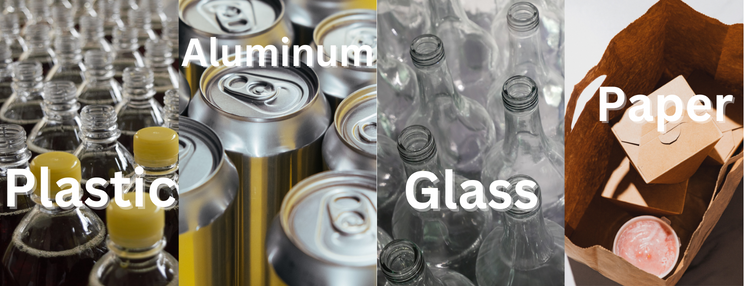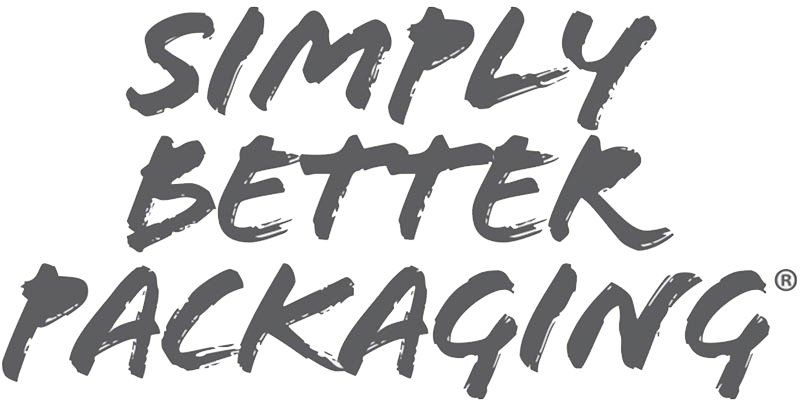Plastic, Aluminum, Glass, and Paper

Why is plastic so bad?
By Catherine Haub
Sustainable packaging has been on the minds of consumers much more now than it has been in the past as 37% of consumers are making sustainability a priority when it comes to purchasing products and brands [1]. Contrary to what many people believe, there are many different factors into what makes packaging sustainable, so choosing a specific type of packaging isn’t as black and white as previously thought to be. Sustainability begins at the extraction of the resources used to make each type of packaging and goes through the products lifecycle. Even though a product may have a cleaner source doesn’t always mean it’s as sustainable as people tend to believe. Plastic is an example of a product that tends to be looked upon negatively from on environmental standpoint, but it may not be as bad as previously thought. To start off, plastics are key to the US economy, as the plastics industry supports hundreds of thousands of jobs, leading the American industry to be a global leader. Since the production of plastic is key to the economy, the US can help other countries improve recycling efforts so less and less plastic ends up as waste.
Plastic is often looked down upon when compared to other types of packaging such as aluminum, glass, and paper. This is mainly due to the low recycling rate of plastic compared to the other types of packaging, however, plastic has the lowest rate emissions rate of all [2]. Each type of packaging has its ups and downs, so it depends on what is most important to the company when it comes to choosing a packaging type. In some areas, plastics rise above the rest and prove to be a better choice sustainably than other packaging options. Here, we will compare plastic to the other types of packaging to show that plastic isn’t as bad as previously thought.
Paper vs. Plastic
• The paper production process emits 70% more air pollution that the production of plastic bags, emits 80% more greenhouse gases, and creates 50% more water pollution [3].
• Making a paper bag consumes 4 times the amount of energy compared to making a plastic bag [3].
• It takes 3 times the amount of water to make paper bags than plastic bag [3].
• It takes 91% more energy to recycled a pound of paper than a pound of plastic [3].
• Paper bags generate 80% more solid waste [3].
• It doesn’t take that much shorter for paper to biodegrade than plastic [3].
• Though paper straws are often marketed as better for the environment than plastic straws, paper straws can’t be recycled and have a higher global warming potential [4].
Glass vs. Plastic
• Plastic is much lighter than glass, resulting in a lower CO2 footprint especially when it comes to shipping and transporting [5].
•Glass has a much higher global warming potential, 14 times higher than plastic [6].
• Raw materials and the cost of production of plastic are lower than glass [7].
• Glass is much more breakable that plastic and can become very dangerous when it breaks [8].
• Glass is made of limestone, and mining limestone can contaminate water and contribute to noise pollution.
Aluminum vs. Plastic
• Aluminum is made from bauxite, and though it is an abundant resource, mining of the material may have environmental concerns such as habitat loss, water contamination, and increased erosion [9].
• Aluminum production is one of the most energy intensive industries, contributing to significant carbon emissions, twice as much as plastic [9].
• Human Toxicity Potential was 14 times worse than plastic [6].
• Aluminum is more expensive as raw materials for an aluminum can costs 25-30% more than a PET bottle with a similar volume [10].
The goal of this wasn’t to say that plastics are the best option for packaging, but that each type of packaging has their own downfalls, and they should be known when choosing a type of packaging.
[1]What is Sustainable Packaging? Why is it Crucial for Consumers? (copiousbags.com)
[2]Microsoft Word – CRES_WhitePager_Plastics_05132022.docx (cresforum.org)
[3]Paper Versus Plastic: Environmental Disadvantages of Each | HowStuffWorks
[5]Glass vs Plastic: 7 Factors to Consider for Packaging your Product (thecarycompany.com)
[6]https://greenandgrumpy.com/glass-aluminum-plastic-what-is-better-for-the-environment/
[7]https://www.plasticstoday.com/packaging/glass-or-plastic-study-profiles-changing-consumer-attitudes
[8]Trayak | Blog | Glass vs Plastic: The Facts | Pros and Cons
[9]Is Aluminum More Sustainable Than Plastic? (Aluminum vs Plastic Comparison) – Better Meets Reality
ABOUT PLACON
Since 1966, Placon has been a leading designer and manufacturer of innovative and sustainable plastic packaging for medical, food, and consumer goods markets. Placon has manufacturing operations in Madison, WI; West Springfield, MA; Elkhart, IN; and Plymouth, MN, and is currently ranked in the Top 20 in Plastics News 2024 Thermoformers Rankings. Placon delivers packaging breakthroughs that inspire better engagement between people and products.







